- Home
- Main Cities in Sicily
- Syracuse
things to do in syracuse: A Cultural and Historical odyssey
Welcome to Syracuse, Sicily—a city deeply rooted in history, culture, and traditions. Learn what to do in Syracuse.
This beautiful coastal town in the southeastern part of Sicily has been a hub of activity for over 2,700 years.
Syracuse was once the most important city in the ancient Greek world. It has played a significant role in shaping the history of Sicily.
Today, Syracuse is a popular destination for travelers. It offers visitors a unique and authentic experience of the island's rich heritage.
Syracuse has impressive ancient ruins and charming medieval streets. It offers a journey through time, history, and culture.
Are you interested in exploring the ancient Greek ruins? Or would you prefer to soak up the sun on the beaches?
Regardless of your preference, Syracuse and its surroundings has something for everyone.
So, let's dive into this fascinating city and discover what makes it such a great place to visit in Sicily.
A Brief History of Syracuse
Of all the Italian cities, Syracuse played the largest role in the ancient Greek world. In its heyday, it surpassed even Athens in both importance and size.
It was also here that Plato tested his ideology of state as a guest of the local tyrant. Maybe not so surprisingly, the results were rather bad.
The most famous Syracusan of all time is Archimedes. In his own time (287 BC - 212 BC) he helped defend the city from the Romans with his self-invented devices.
A long history makes sure there are lots of things to do in Syracuse.
Syracuse is located in the southeastern corner of Sicily, on the shores of the Ionian Sea. This area was the hardest hit by the 1693 earthquake and the tsunami that followed.
The earth suddenly opened up under people's feet, engulfing them in its terrifying embrace. Masses of people fell into the gaping holes, and whole towns collapsed in an instant.
The earthquake, with its unfathomable power, devastated the southeastern corner of Sicily. A hundred and fifty kilometers west of Syracuse, it wiped out the towns of Ragusa, Noto, and Modica, leaving behind a landscape of ruin and despair.
And, of course, many smaller towns between, each with their own stories of loss and survival.
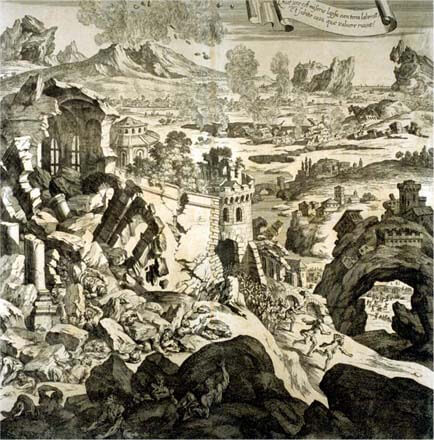 A painting drawn after the great earthquake that hit Sicily, documenting the carnage.
A painting drawn after the great earthquake that hit Sicily, documenting the carnage.Noto, Ragusa, and Modica were rebuilt entirely, this time in the Baroque style, a decision made due to the prevailing artistic trends of the time. As such, they have survived to this day. Now, these towns are among Sicily's main attractions.
After you have completed your trip to Syracuse, it's a good idea to visit these cities as well.
Syracuse, like the other towns, was also devastated by the quake. Its renowned Duomo, for instance, was reduced to rubble.
Or at least almost all of it did. In its place was once, two and a half thousand years ago, the Temple of Athens. Those columns, a testament to the passage of time, still stand there today.
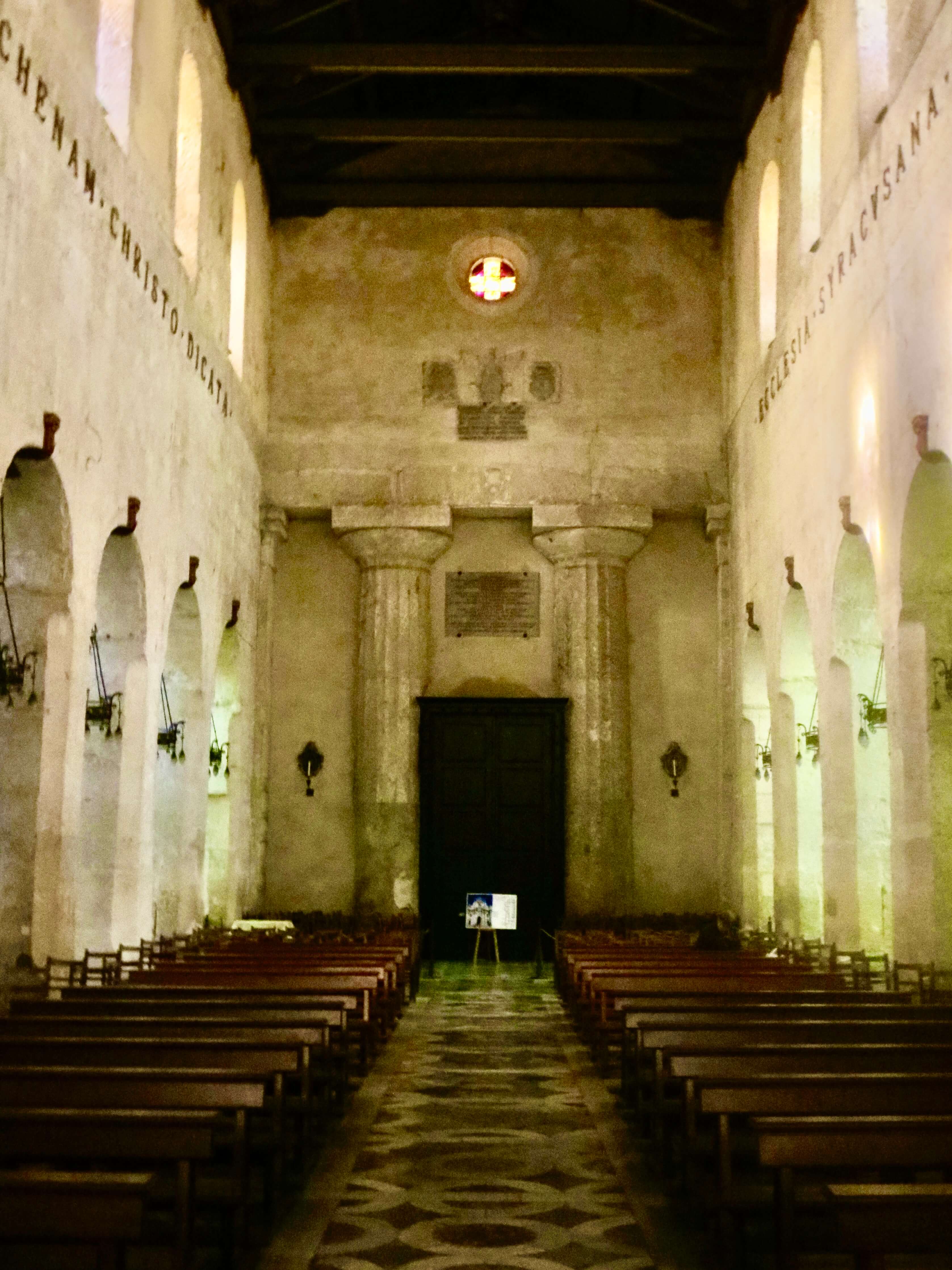 Inside the Duomo of Syracuse.
Inside the Duomo of Syracuse.1. Historic Centre of Syracuse: The Island of Ortigia
The old town itself is one of the attractions. It's a serene experience to wander through its tranquil medieval alleys, pausing at the piazzas, and immersing in the local life.
The center of the Old Town is the Duomo, a historical marvel, and the surrounding piazza.
On the shores, there are large rocks where you can jump in for a swim. Or go there to bask in the inspiring beauty of the sunbathing spots.
The town's unique atmosphere is accentuated by the gentle light from the sea. The old houses, with their captivating architecture, seem to gaze out to the sea as if under a spell.
From charming cafés and delightful ice cream stands, especially near the Duomo, to the many inviting restaurants tucked away in the alleys, the town offers a diverse culinary experience. It's a good idea to book in advance to ensure you don't miss out on these delectable treats.
Conveniently located on the island near the Umberto I bridge, the market and the shops next to it offer a wide range of food and groceries, ensuring you have everything you need for your stay.
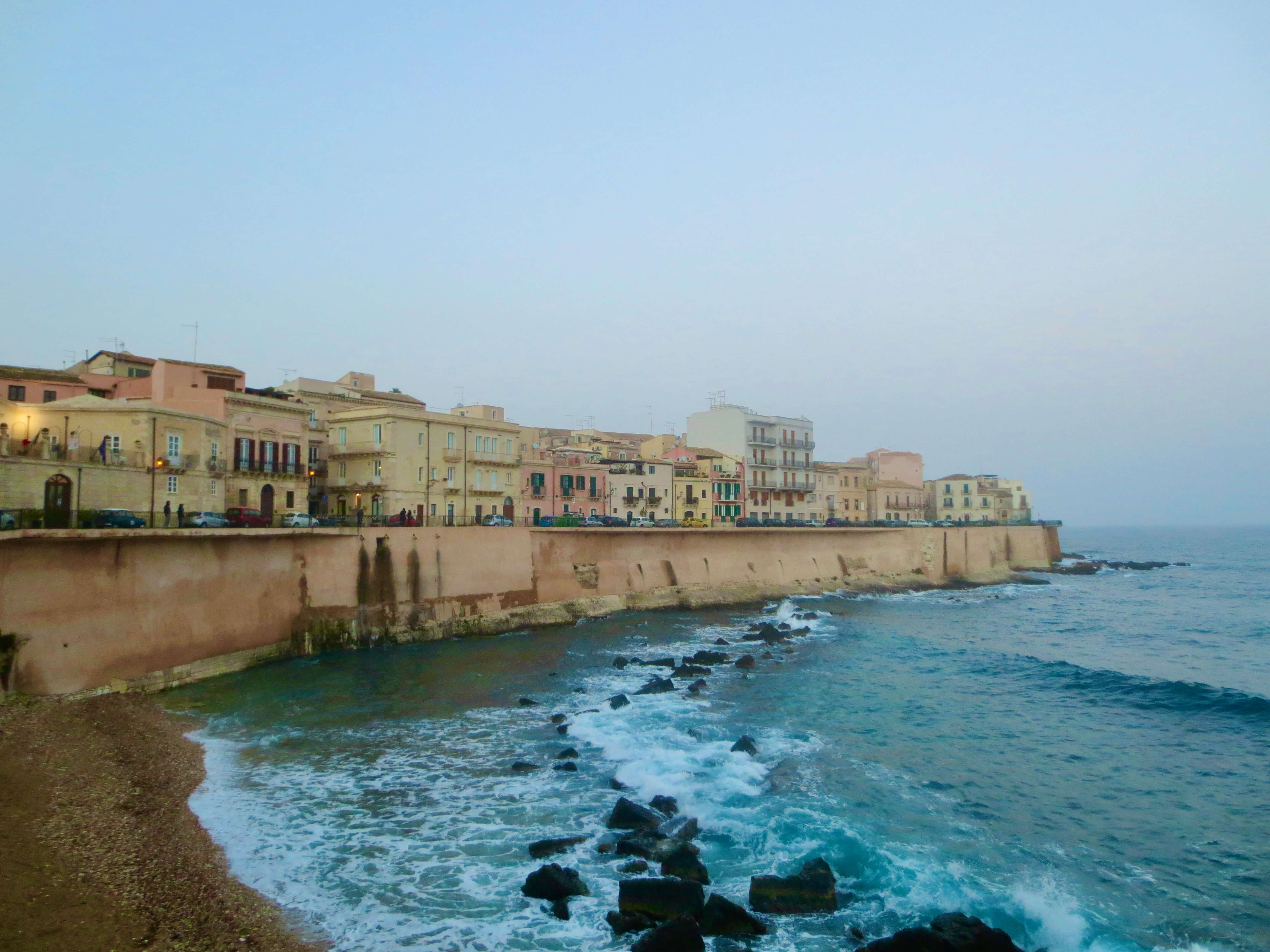 Ortigia in January.
Ortigia in January.2. The Duomo and the Surrounding Piazza
Syracuse Cathedral's history dates back two and a half thousand years. At that time, it was the site of the Temple of Athena.
Tyrant Gelon erected it around 470 BC to celebrate his victory over Carthage. In its day, the temple was famous for its splendor worldwide.
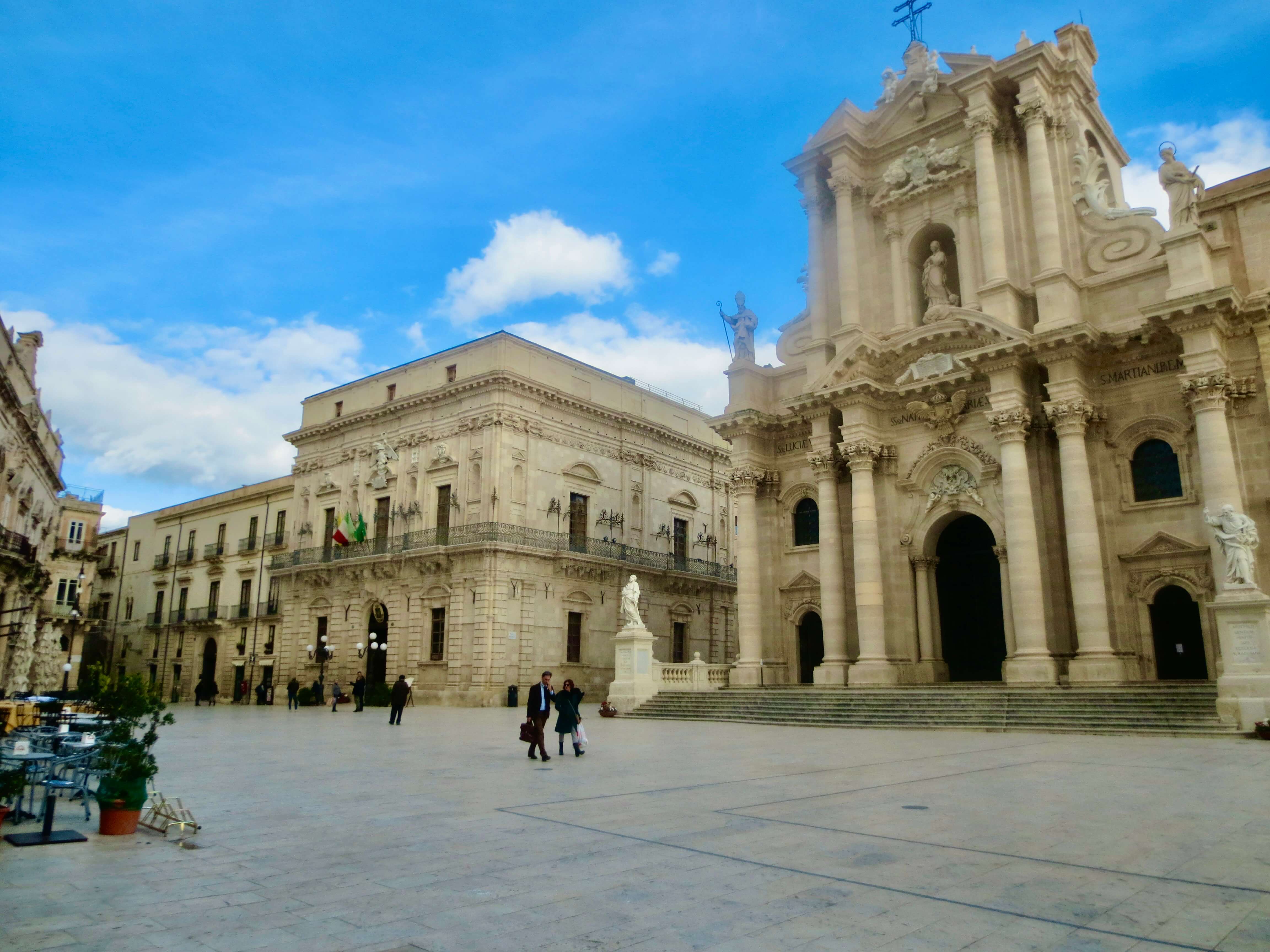 Piazza Duomo in Syracuse.
Piazza Duomo in Syracuse.In 535, the Byzantines converted the temple into a church. Three hundred years later, Arabs turned it into a mosque.
Centuries later, the Normans, in their turn, conquered Sicily and transformed the building back into a church, continuing the cycle of its history.
Despite the tumultuous changes brought about by conquerors, the building stood as a resilient testament to history. Its endurance was put to the ultimate test in 1693 when an earthquake finally brought an end to its story.
Or almost all of it. The Doric columns of the Temple of Athens are still standing. Now, they are part of the Baroque church built around them.
On the roof of the cathedral, where the golden statue of Athena used to stand, stands the statue of the Virgin Mary. With her is the patron saint of Syracuse, Santa Lucia.
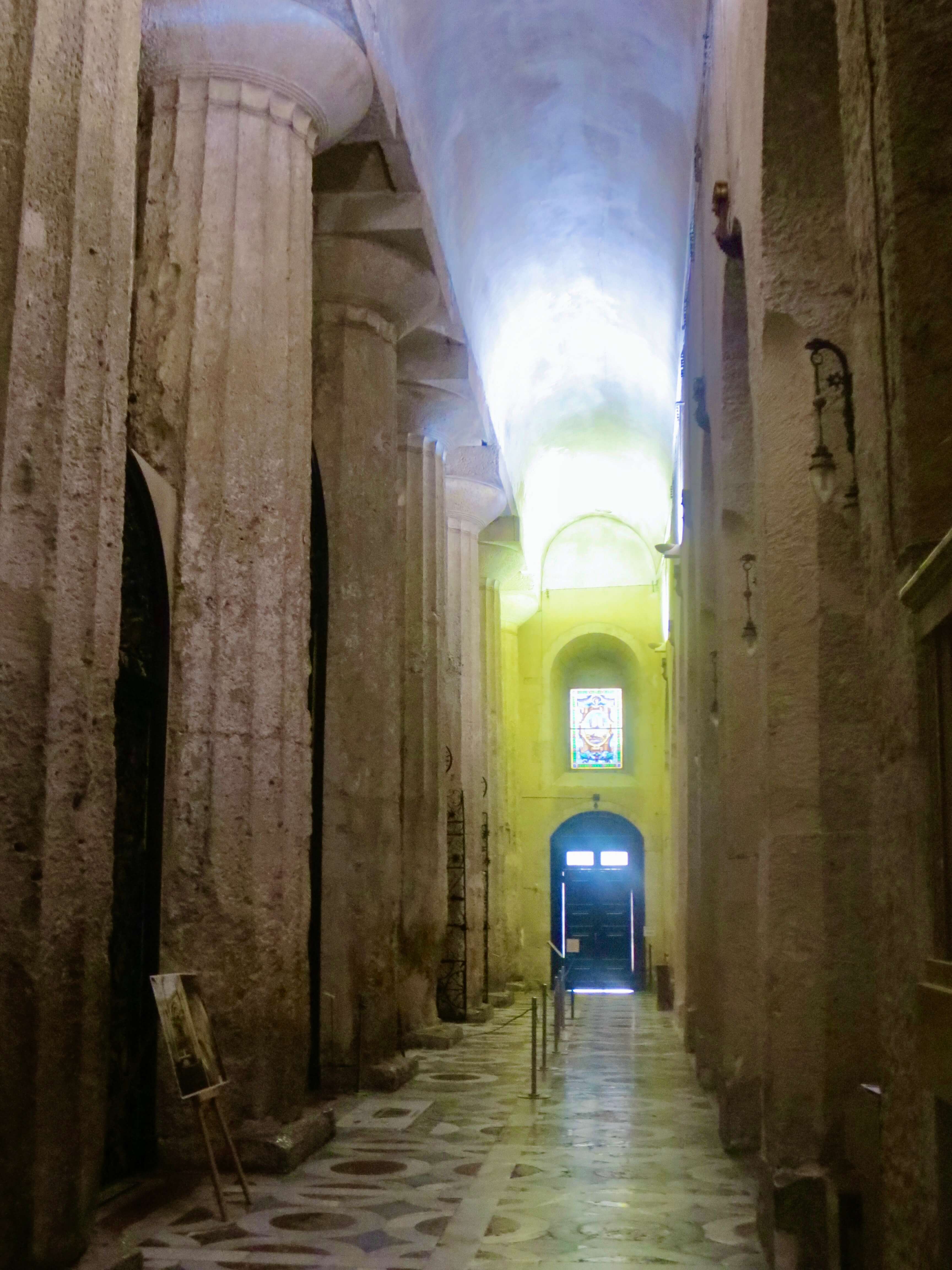 On the left, the columns from the Temple of Athena are still standing.
On the left, the columns from the Temple of Athena are still standing.Around the Duomo is a semi-circular piazza, a vibrant social hub. The edges of the piazza are lined with a tempting array of options-from aromatic coffee to delectable snacks and refreshing ice cream, catering to every palate.
The piazza's edges are adorned with palaces steeped in history and the town hall, each with its own unique story waiting to be discovered. At the back, the church dedicated to Santa Lucia stands as a testament to the town's rich past.
As said, Santa Lucia is the patron saint of Syracuse.
Lucia lived under Roman rule at a time when Christians were persecuted. When she refused an arranged marriage, the would-be-husband sued her. As a result, Lucia was sentenced to prostitution.
When the law enforcement came, Lucia refused to move. To everyone's surprise, even the bulls could not move her. So they tried to burn her - but that failed, too.
In the end, they managed to kill her though.
When you're exploring Syracuse, don't overlook this church. It's not just a place of worship, but a site of historical significance. The church is home to a painting by Caravaggio: "The Burial of Santa Lucia". Caravaggio, seeking refuge after a turbulent incident in Rome, found solace in Syracuse.
Caravaggio's fame is due to his unique chiaroscuro style. This technique, which involves dramatic interplay of light and shadow, is a significant aspect of his art. "The Burial of Santa Lucia" is a prime example of this style, adding to its allure.
3. The Archeological Park (Parco Archeologico della Neapolis)
The archaeological park is on the other side of Syracuse's modern center. You can get there by local bus, tourist bus, or on foot from Ortigia.
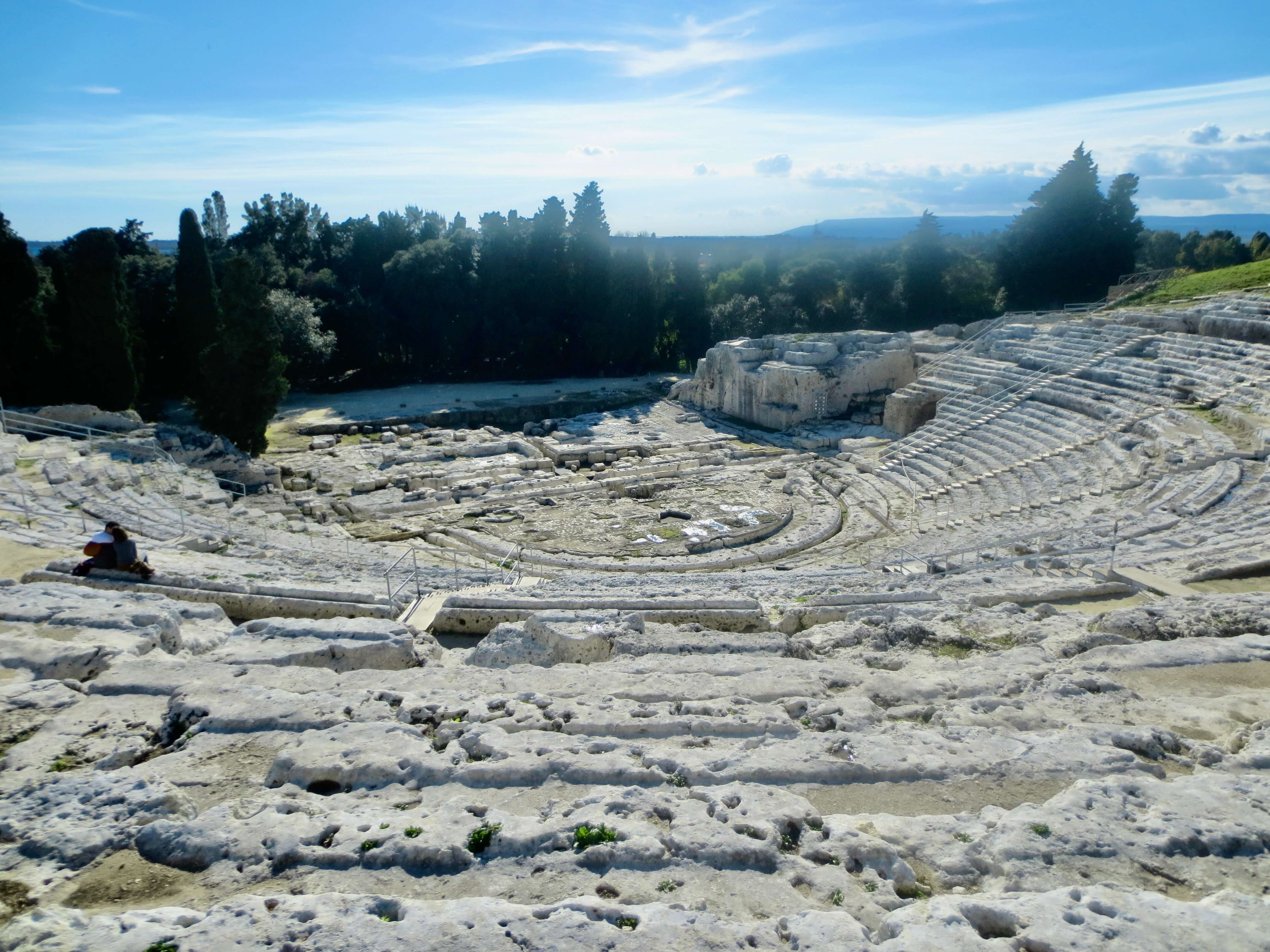 Greek Theater in Archeological Park.
Greek Theater in Archeological Park.The crown jewel of the park is the Greek theatre, a monumental structure that harks back to around 470 BC. It was not only the largest Greek theatre of its time but also a testament to the grandeur and cultural significance of ancient Greece, a fact that never fails to inspire awe and reverence.
The Syracuse Theatre, a significant historical site, was once the venue for the later tragedies of Aeschylus. It also holds the distinction of being the venue for the world's first comedies, a testament to its rich cultural heritage.
Even today, the theatre remains a vibrant part of the cultural scene, with the ancient plays being performed in the summer, a tradition that has continued for centuries.
Near the theater is the Ear of Dionysius, a limestone cave that was used as a prison in the 16th century. The cave's unique shape creates perfect acoustics, allowing whispers to be heard from one end to the other.
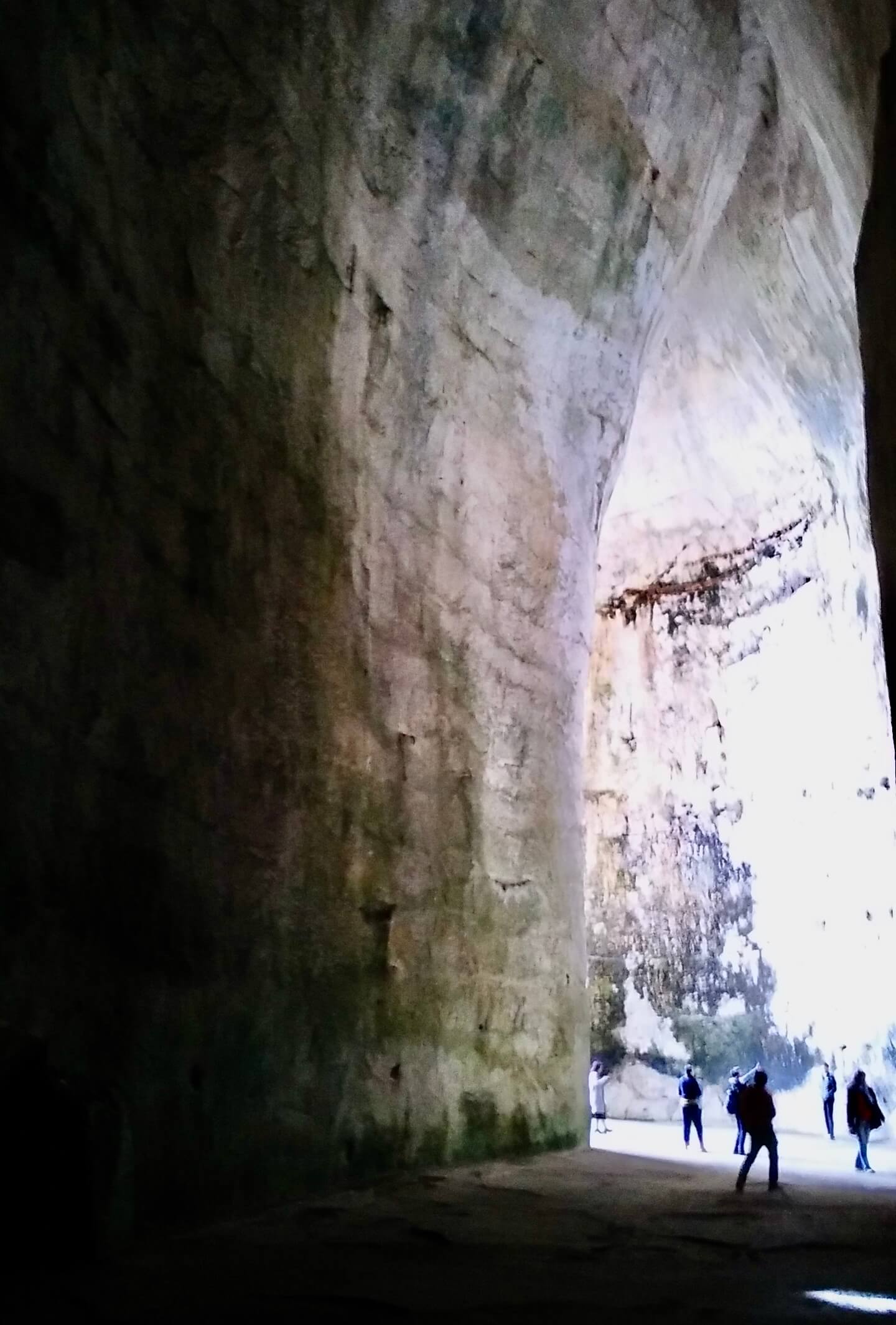 Inside "The Ear of Dionysos."
Inside "The Ear of Dionysos."They say it used to house prisoners of war. This may be true. But the idea that the acoustics of this place made it an 'ear' for tyrant Dionysos is a mystery that continues to intrigue us.
Like the cave's name, this story is intricately linked to the famous painter Caravaggio. He crafted these tales while evading a murder sentence in Syracuse.
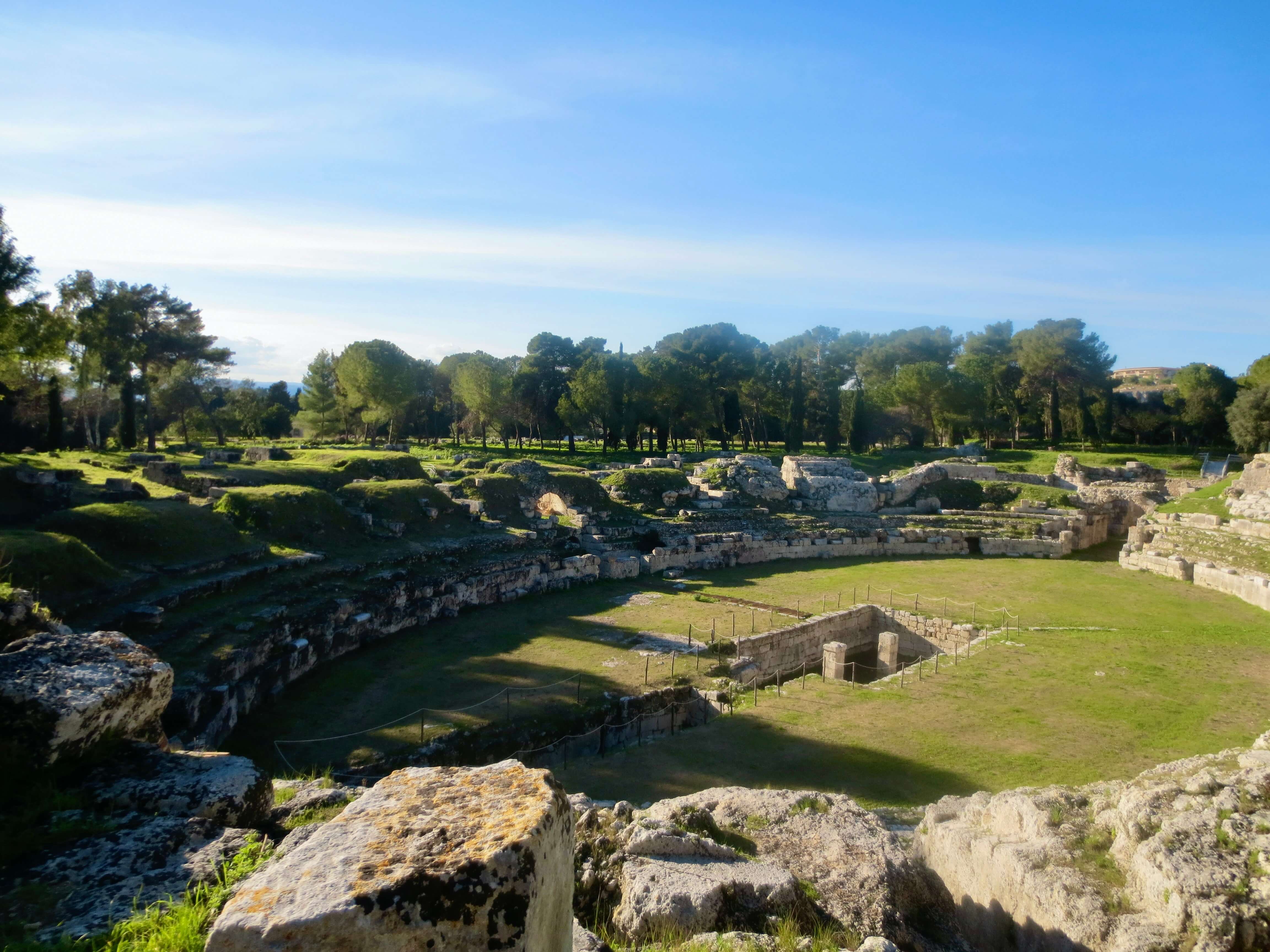 The Roman Amphitheater.
The Roman Amphitheater.The Roman amphitheater, a historical gem from the first century CE, stands across the street. It was not a place for plays like the Greek theatres but a grand stage for gladiator games and horse races, a testament to the Romans' love for not-so-subtle entertainment.
At the heart of the amphitheater lies a unique feature- a pool that was used for fights against aquatic animals. The rest of the ground was covered in sand, a distinct characteristic that absorbed the spilled blood.
The archaeological park boasts the unique altar of Hieron II, a significant relic dating back to the 3rd century BC, a time when Syracuse held a prominent position in the Greek Empire.
Imagine the grandeur of the largest sacrificial stone of antiquity, the altar of Hieron II. Stretching the length of a stadium, it was the sacred site for the sacrifice of 450 bulls during the annual festivals in dedication to Zeus.
Following the solemn sacrifice, the bulls' meat was not wasted but served to the people at a grand communal barbecue, fostering a sense of unity and celebration.
All in all, the archeological park is undoubtedly one of the main things to do in Syracuse.
4. Archeological Museum (Museo Archeologico Paolo Orsi)
Located just five hundred meters east of the archaeological park, you'll find the Syracuse Archaeological Museum, a must-visit for history enthusiasts.
If you are particularly interested in the area's history, you should visit this one, too. It is not just one of the largest archaeological collections in Sicily, but also a significant repository of the region's rich history.
The museum provides a comprehensive coverage of the history of the region of Syracuse, spanning from prehistory to Roman times. A visit here will leave you with a deep understanding of the region's past.
5. Ortigia Street Market
The Ortigia market, once the sole provider of the city's food needs, has evolved over time. While it has been partially replaced by supermarkets, it still retains its charm and importance in Syracuse's culinary landscape.
The market, a bustling hub of activity, is best experienced in the morning to early afternoon. Arriving early will allow you to witness the market come to life, making it a perfect start to your day in Syracuse.
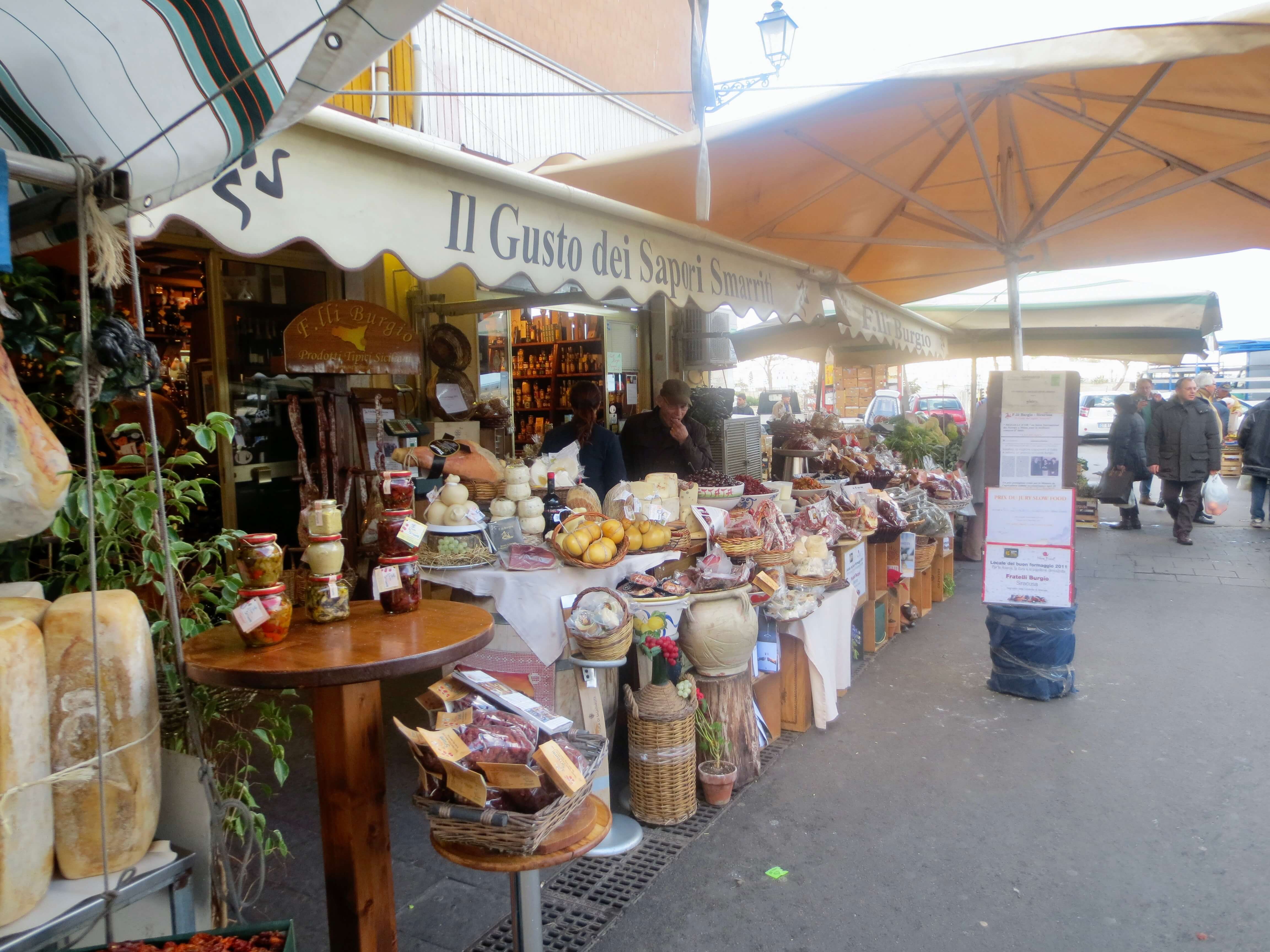 Lots of delicious food on sale here!
Lots of delicious food on sale here!Here, you can conveniently grab a snack for your trip ensuring you're fully prepared for your journey. Or, you can pick up fresh ingredients to make your own food.
There are also shops on the edge of the market which are well worth checking out. The most legendary is Caseificcio Borderi, offering a wide variety of options. It is famous for its delicious homemade mozzarella, a must-try for any food enthusiast.
At Caseificcio Borderi, the options are endless. You can savor the mozzarella on its own, or indulge in a mozzarella-filled sandwich.
6. Puppet Museum (Museo dei Pupi)
In Sicily, puppet theatres are not just a form of entertainment, they are a living legacy of the wandering troubadours of the Middle Ages. The stories they tell, often about King Charlemagne and his knights, are a direct link to our historical past.
In the past, the vibrant puppet shows were a staple of the markets, accompanied by lively music. Today, they have found a new home in puppet theatres.
The Mauceri family has been making puppets for three generations. Their theatre is within walking distance from the puppet museum.
You can visit the theatre to see puppet shows.

7. The Catacombs of Syracuse
Step into the world of Syracuse's catacombs - the ancient, labyrinthine catacombs of San Giovanni on the mainland, and the hauntingly beautiful catacombs of San Filippo Apostolo in Ortigia.
The catacombs of San Giovanni used to have a church. The remains of it are still there.
This church was the city's cathedral until an earthquake in the late 1600s destroyed it.
Unaffected by the quake, the catacombs stand as a living history, preserving the remains of Christians buried there in the 300s. While most of the bodies have been moved, the catacombs continue to hold a significant place in the historical narrative of Syracuse.
The San Filippo catacombs are on the island of Ortigia, so they are more accessible to many. However, to get there, you have to take a guided tour.
The catacombs of San Filippo, nestled in the former Jewish quarter, hold a unique historical significance. At one time, Jews constituted about 10% of the total population of Sicily, and these catacombs bear witness to their rich heritage.
The catacombs also house an underground fountain, a testament to the Jewish purification rituals that once took place here.
It's a rare privilege to visit the catacombs of San Filippo, as in Sicily, there are only two such fountains. The other is in Palermo.
The place is easy to walk past, and there are no big advertisements. However, it is still a great place for little spooky underground things to do in Syracuse.
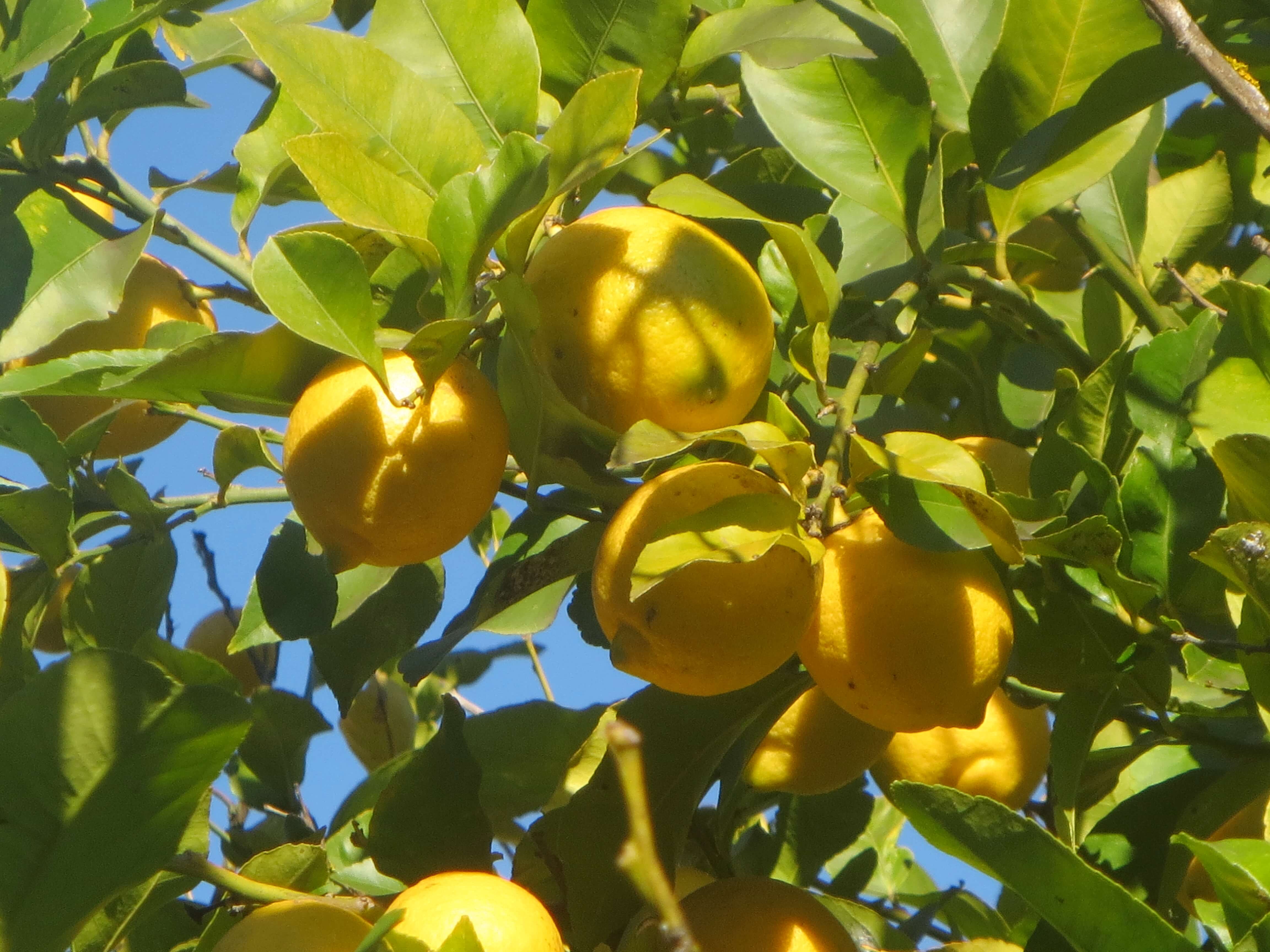
8. Eat and Drink in Syracuse
No trip to Syracuse would be complete without sampling some delicious traditional Sicilian cuisine and wine.
The region is a treasure trove of culinary delights, from its fresh seafood to a wide variety of pasta dishes and pastries that will surely excite your taste buds.
Visitors to Syracuse are spoiled for choice when it comes to dining. They can savor fresh seafood at one of the many restaurants along the harbor, or experience the authentic taste of a traditional Sicilian pizza at a local pizzeria.
The area around Syracuse is not just about food, it's also home to some of the best wineries in Sicily. Here, you can immerse yourself in the local wine culture, touring the wineries and sampling their products in an authentic and picturesque setting.
Accommodations in Syracuse
Syracuse has a variety of accommodations to suit every budget and taste.
Visitors can choose from luxury hotels, bed and breakfasts, and self-catering apartments.
Many of the accommodations are located in Ortigia, making exploring the many things to do in Syracuse easy.
Getting to Syracuse
Syracuse is easily accessible by air, train, or car.
The nearest airport is Catania-Fontanarossa, about 50 km (31 miles) from Syracuse.
Visitors can take the train from Catania or drive along the scenic coastal road from Catania to Syracuse.
Syracuse train station is about a fifteen-minute walk from the island of Ortigia. The general recommendation is to stay there—in Ortigia, that is, not the train station.
If walking is not convenient, you can take a taxi. Alternatively, local buses, which stop just a block away from the train station, provide a comfortable and convenient way to reach Ortigia.
If you're arriving in Syracuse by car, finding a parking spot can be a challenge. However, you can drive directly to the Molo Sant'Antonio car park, a reliable and convenient option for leaving your car while you explore Ortigia.
It's important to note that Ortigia is a car-free zone, so if you're planning to explore the island, leave your car behind and enjoy the pedestrian-friendly streets.
Things to Do in Syracuse: Conclusion
Syracuse, Sicily, is a city rich in history, culture, and traditions. There are many things to do in Syracuse.
The most charming part of the city is its old town on the island of Ortigia. Apart from its historical value this place also seduces with good food and communal life.
Syracuse is by no means a dead tourist town. People live here and enjoy their lives - and it shows. Syracusans are proud of their town. As they should.
Besides the general good vibes, Syracuse has also many of Sicily's main attractions. These include the old town of Ortigia, its Duomo, and the market.
Another of the top things to do in Syracuse is its archaeological park
Syracuse is also a good base from which to explore the other Baroque towns in the region - as well as one of Sicily's main wine regions: the Noto Valley. Having your own car is an advantage but not a necessity. You can also take a bus or hire a car with a driver.
Syracuse is a pleasant little town. It breathes in its own seaside rhythm. Visit the main attractions in a day or stay for longer.
(This page last edited: December 13, 2024)
Recent Articles
-
Honeymoon in Sicily: Where Landscapes Stir the Heart
Dec 17, 25 12:21 PM
Honeymoon in Sicily: Timeless temples, coastal hideaways, slow meals, and landscapes that invite closeness. -
Best Time to Visit Sicily: Your Seasonal Guide
Dec 05, 25 04:23 AM
Find the best time to visit Sicily. Explore seasonal weather, crowds, prices, and highlights. -
Where to Stay in Sicily: Top Areas for Every Traveler
Nov 27, 25 08:14 AM
Where to stay in Sicily: A guide to the island’s best regions, helping you choose the perfect base for your trip.
Follow MANY FACES OF SICILY on Facebook, Instagram, Bluesky & Tumblr
Contact: vesa@manyfacesofsicily.com







